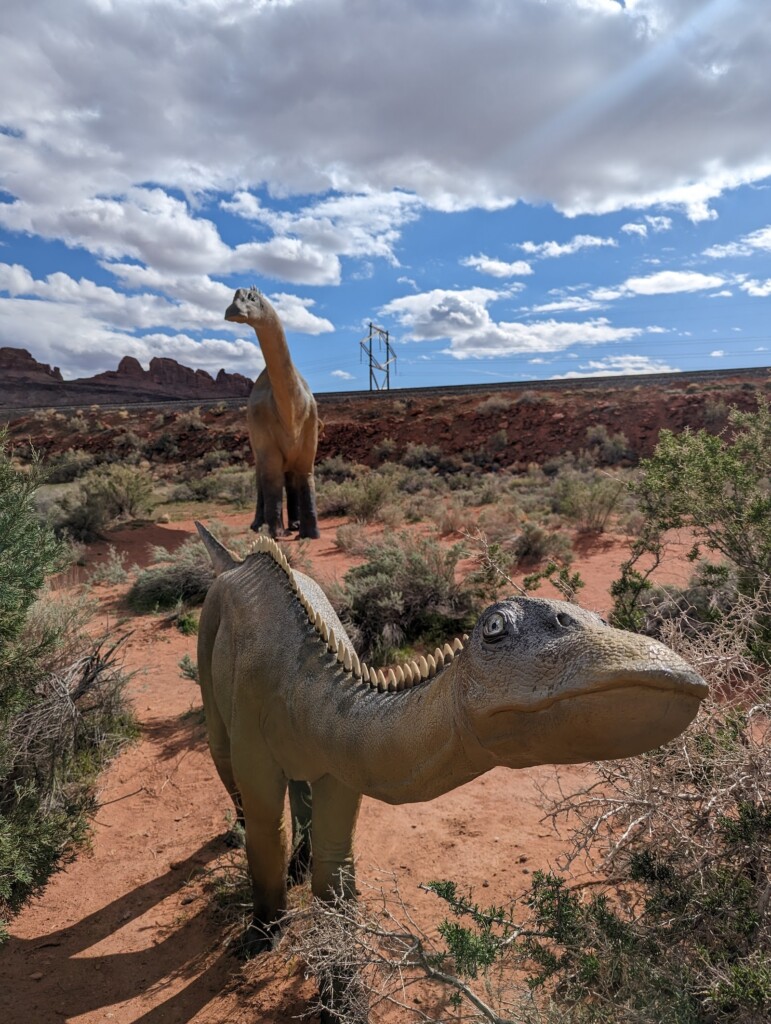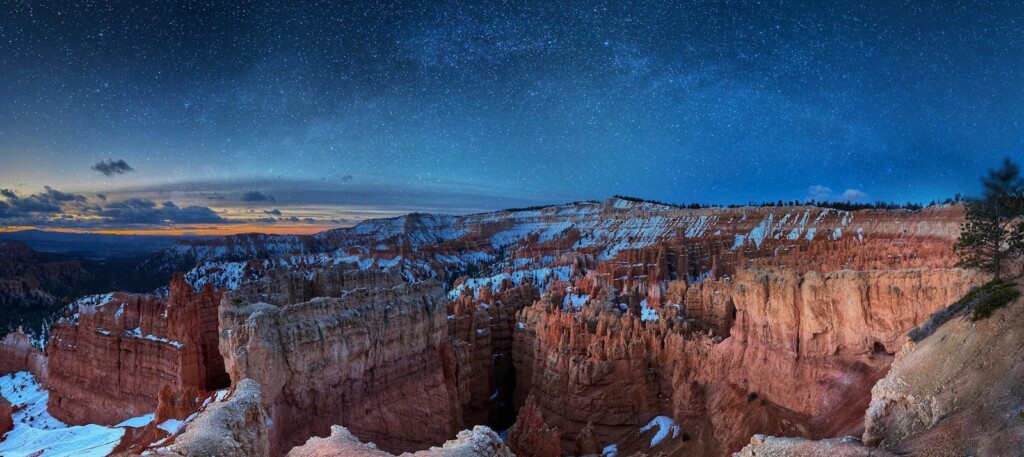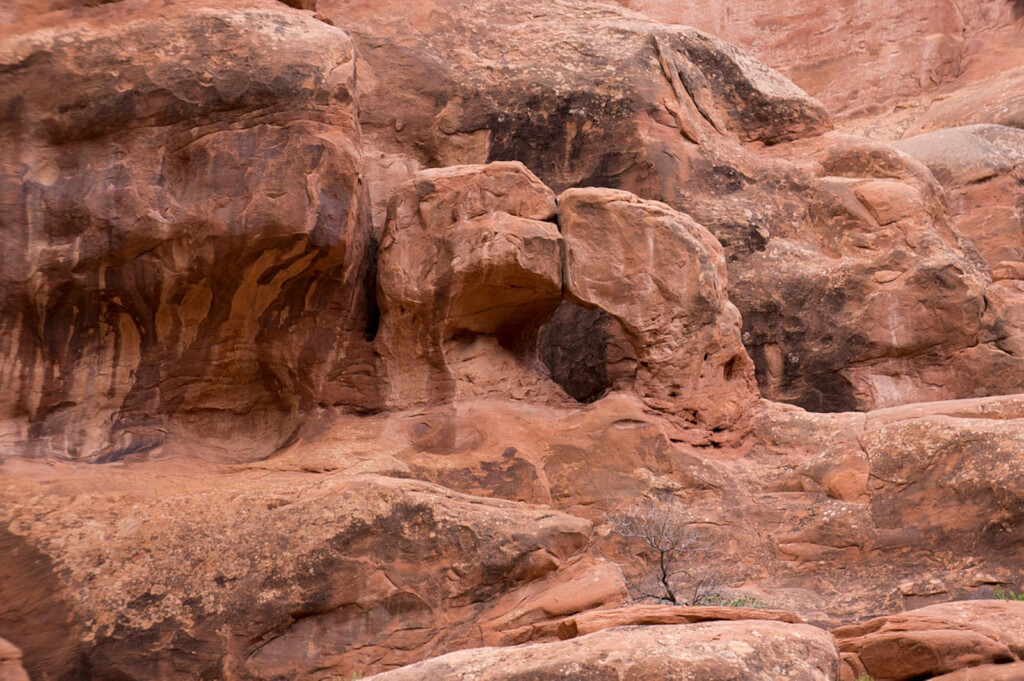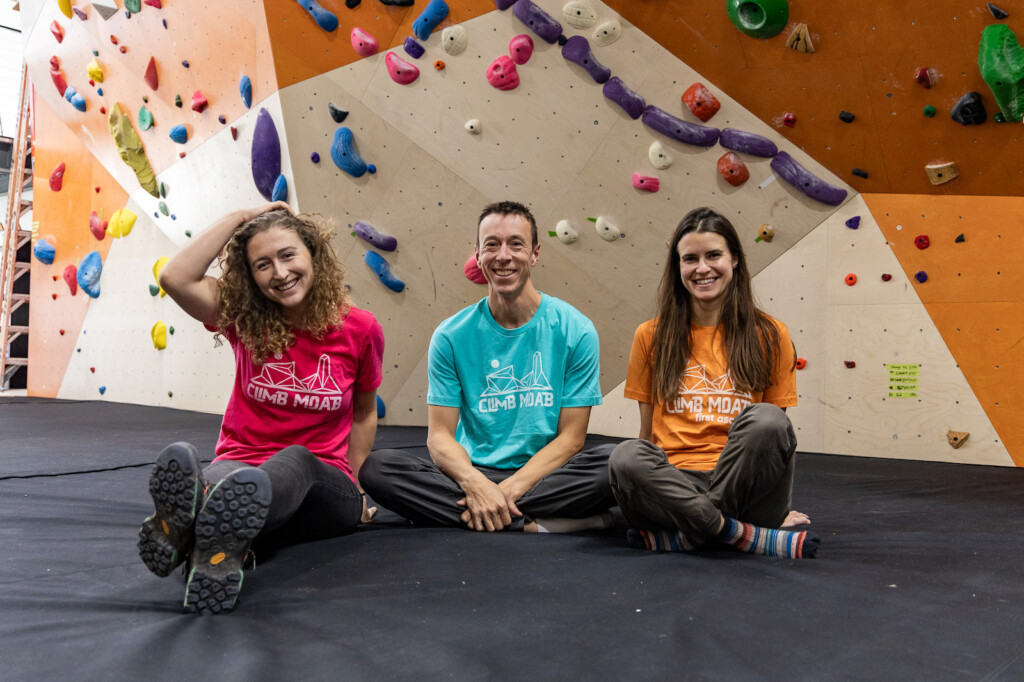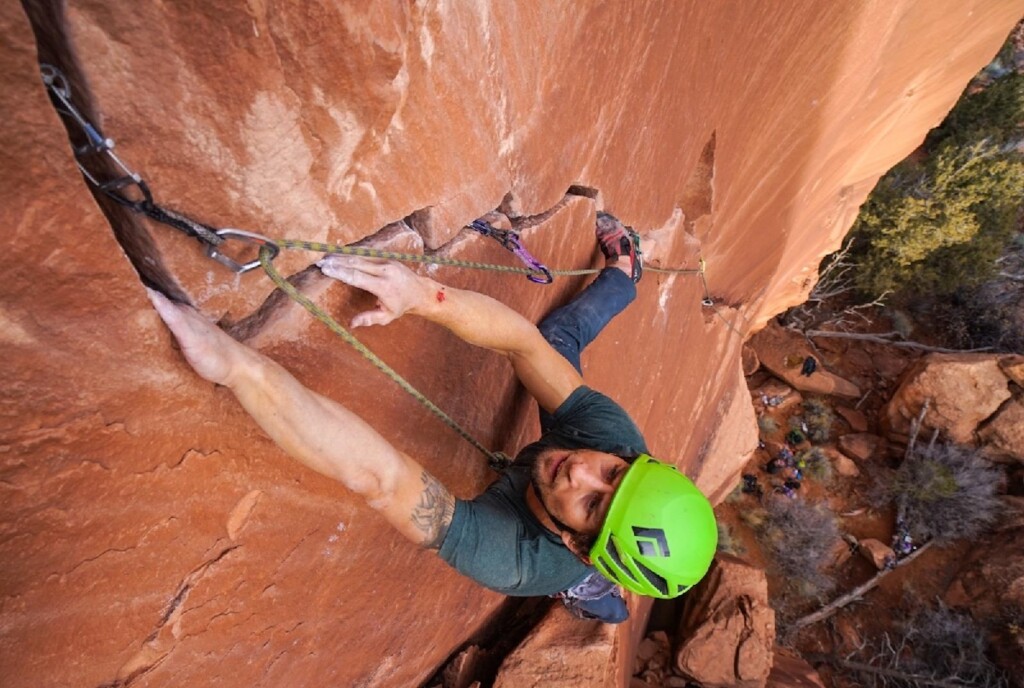How many dinosaurs can you name?
Meet Hiero, who, at three years old, can name nine different dinosaurs, thanks to the Moab Giants Museum. With a museum, live paleontology lab, 3-D movie experience, and life-sized dinosaurs, this is a dinophile’s paradise.
Whether you are passing through town or want a rest-day activity, a visit to the Moab Giants is sure to inspire you and make you feel young in a field of ancients.
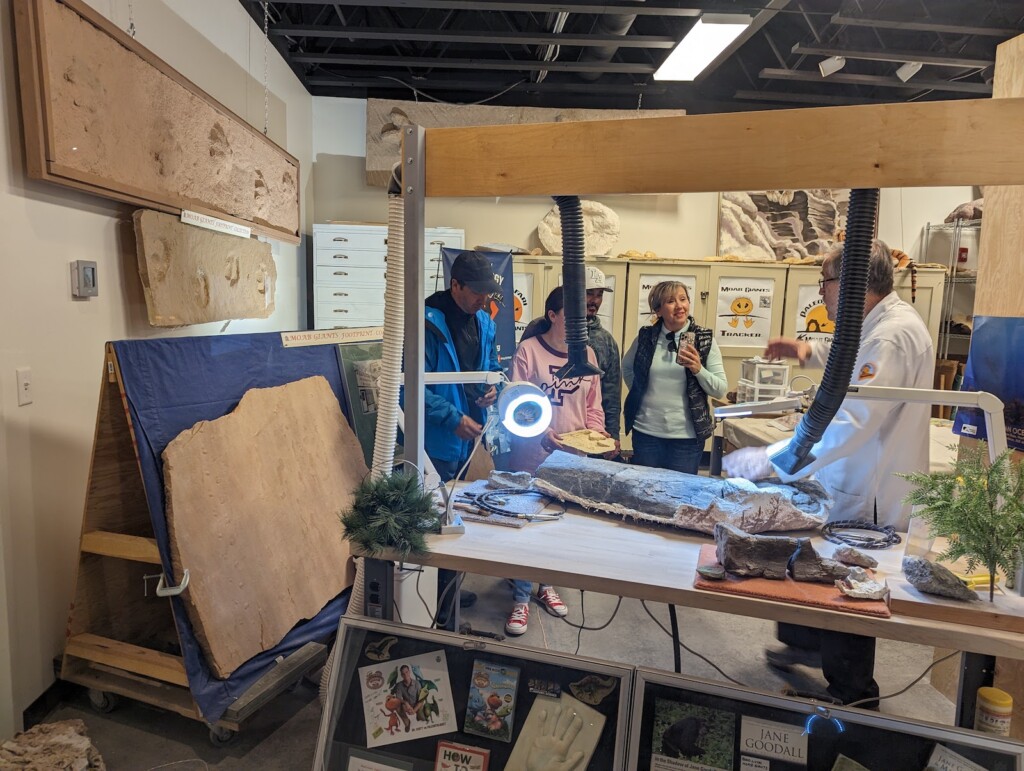
A highlight of this trip was visiting the live paleontology lab. Noses and forehead prints on the glass that peers into the lab show interest in the lab. Lee and Susan Shenton, volunteers with the Gastonia Chapter of the Friends of Paleontology, work diligently to uncover the femur of a 155-million-year-old Sauropod that met its unfortunate end in quicksand. Carefully removing beach sand and petrified mud chunks reveals the environment of a delta in the late Jurassic period. Bite marks in the femur (half the size of my body) indicate it was prey for an even larger carnivore.
Employees take a break to welcome curious guests and show them the perks of being a paleontologist and help interpret the complex and amazing history of these fascinating creatures. They see a lot of traffic. More than 58 people had visited that day, cultivating their fossil fascination.
First, we compared our feet to a replica of a 300-million-year-old Hadrosaur footprint, and noticed that even as a juvenile, it was about 10 times our foot size! Then we compared our hands to an Ankylosaurus, an armored spiked dinosaur the size of a pickup truck. We learned that almost all dinosaurs had five toes at one point, but due to evolution, some have lost them over time. A complex, circuitous path of evolution led to the variety of types of feet and footprints we see today. Scientists use those clues, matched with the skeletons and any other remains to make interpretations of what these mighty beasts may have looked like.
We also saw a fossilized coral reef, evidence that this area wasn’t always desert and canyons, but a sea. This seawater came from what today we call the Gulf of Mexico and all the way to what is now Vancouver. This Western Interior Seaway came and went 29 times. A mile-long hole drilled into the ground for potash prospecting produced a core sample revealing these layers.
As we leave the lab, Lee turns off the lights and reveals that darkness sometimes helps illuminate what could not be seen before. The obvious 3-toed tracks of carnivores were accompanied by subtle turtle footprints!
An understanding of the full timeline in this story, ranging from 300-million-years-ago to 20 years, is found here. A visit to the Paleo Camp shows how a paleontologist that discovered the UtahRaptor 20 years ago lived in tents, immersed in the pursuit of clues.
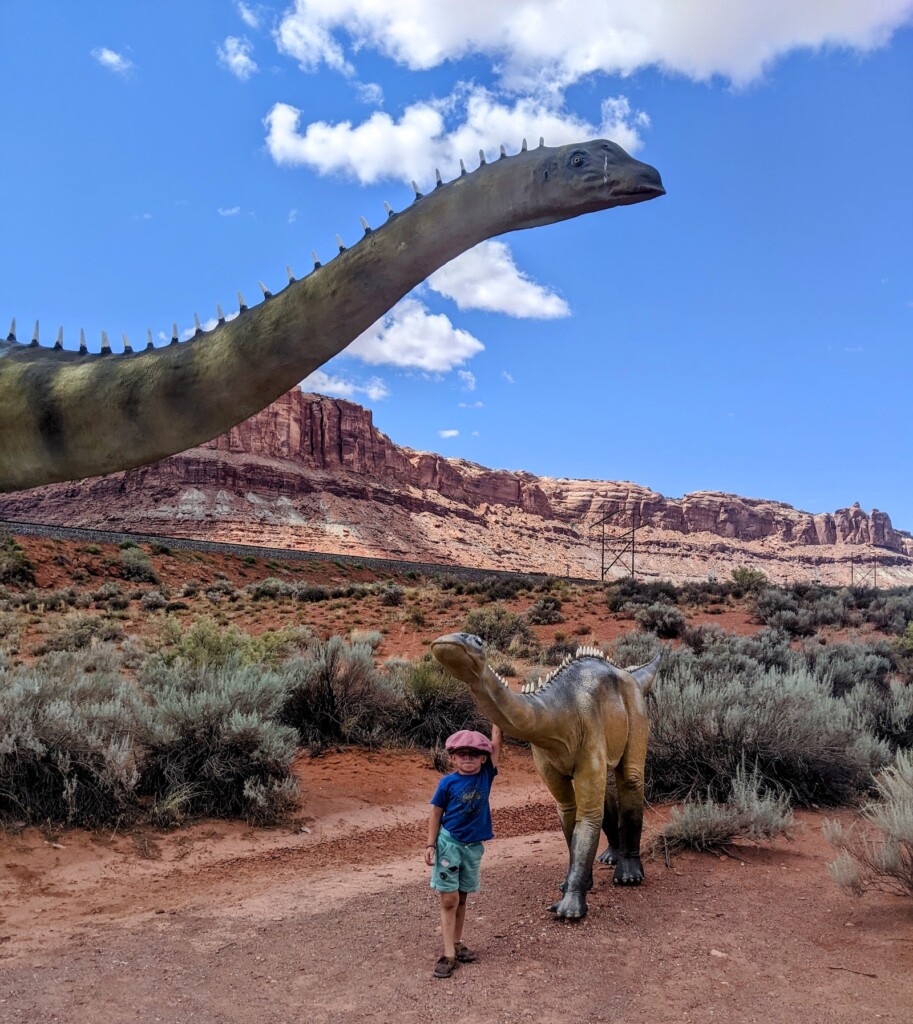
Across the highway, intrepid visitors can see for themselves the dig site where they discovered not only a footprint but a skeleton of the Utahraptor (Ostrommaysorum), a flying 2-toed dromaeosaur of the early Cretaceous Period. This site is being turned into the new UtahRaptor State Park, which should open in a year.
These childlike fascinations could result in a career. During Grand County High School’s Career Week, BLM representatives talked to a 9th-grade math class about finding jobs through USAJobs.com. One of those positions is the job of a paleontologist. Through a visit to the lab, one can earn their Junior Paleontologist badge, a stepping stone into a lifetime of learning.
For Willow Nichols, now a senior at Grand County High School, who took many field trips here, this experience was educational and life-changing. She reflects on how crazy it is to have such a facility in her hometown. She also has explored the other dinosaur tracks, like those at the Mill Canyon dinosaur bone trail up the road, where fossils are exposed in the cliff face, and reports that being able to see it in real-sized dimensions helped her get a better understanding of what the prehistoric world looked like.
As I left the gift store, a seven-year-old from Ogden beamed with excitement about getting to learn about the “first dinosaur to have landed here.” She has much to learn about the history of these ancient ancestors to birds, but she’s in the right place!

